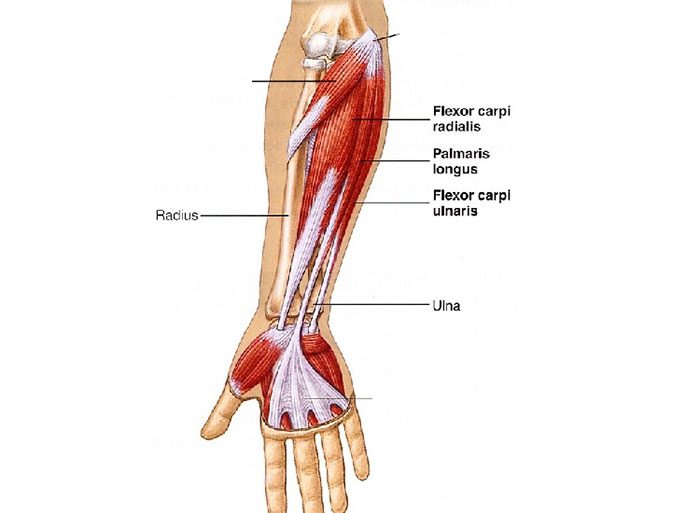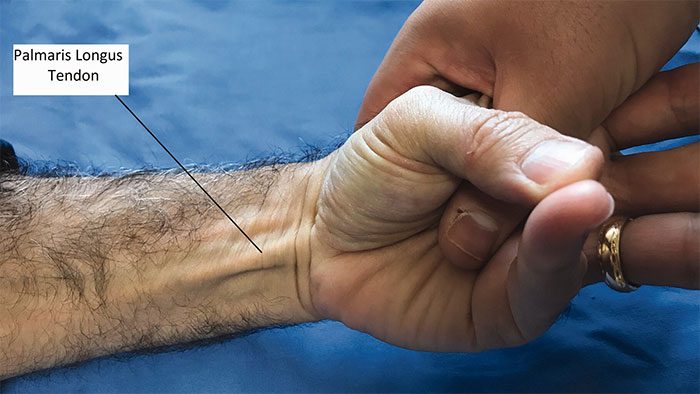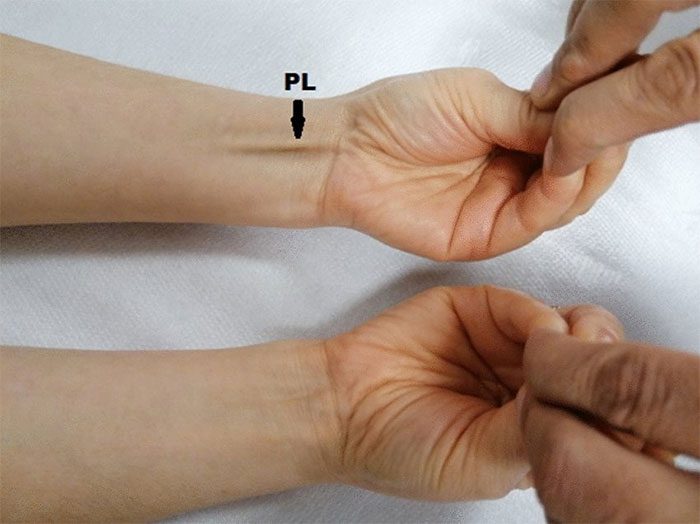The evolution of humans is no less miraculous compared to other creatures. We have indeed come a long way to become the dominant species on Earth. Throughout this millions-of-years journey, human anatomy has changed significantly.
We have developed some extraordinary reflexes and intelligence while discarding certain “features” that we may no longer need. One characteristic that nearly 14% of the current population lacks is the palmaris longus muscle!
So, what is the palmaris longus? What is its significance, and why do some people no longer possess this muscle?
Palmaris Longus: A Primitive Muscle Important to Early Humans

The muscle structure of palmaris longus in the forearm. (Image: Unbelievable-facts).
The palmaris longus is a muscle located at the front of the forearm, connecting to the upper arm bone and extending to the palm of the hand. It assists in wrist flexion and tightens the middle of the palm, which is very useful for gripping and holding objects.
This muscle was more important for our ancestors, who spent a significant amount of time living in trees, such as the hominids and early humans. It helped them maintain a firm grip during activities like swinging and climbing. It also aided their movement among branches.
Comparative studies among different species have shown that the presence of the palmaris longus muscle varies widely. This means that some animals have it while others do not. For instance, humans commonly have this muscle, but it is absent in some individuals. Conversely, birds and amphibians completely lack this muscle. This indicates that the importance of the palmaris longus muscle diminishes in species that have not adapted to a tree-dwelling lifestyle.
Understanding the role of this muscle can provide researchers with insights into the evolutionary history of different animal species and how their bodies adapt to specific environments. The differences in the presence or absence of the palmaris longus reflect the diverse needs and locomotion strategies of various species. Overall, the palmaris longus highlights the complex relationship between form, function, and the unique adaptations of organisms to their habitats.
Why Do Some People Lack the Palmaris Longus?

In primates, this muscle is highly developed, allowing them to use their legs like true arms. In humans, over time, this muscle has degenerated to the point where having it or not doesn’t matter. Doctors often remove this muscle if needed to reconstruct other body parts. (Image: Journals.sagepub).
The palmaris longus muscle is absent in about 14% of the current human population. However, this absence is not evenly distributed and can vary among ethnic groups, genders, and even between the left and right forearms. But why do some people lack this particular muscle?
To understand the absence of the palmaris longus, we must delve into its evolutionary significance. In quadrupedal animals, including other primate species, the palmaris longus plays a role in weight-bearing in the upper limbs, which is crucial for activities like walking on all fours.
However, in bipedal humans, this role becomes less significant due to changes in posture and movement. As humans evolved to walk upright, the palmaris longus became less important for weight-bearing and gradually shrank in size or even disappeared entirely in some cases.
The absence of the palmaris longus in some individuals raises questions about its developmental origins. Researchers are still investigating whether its absence is due to the regression of this muscle bundle during embryonic development or if it simply does not form completely. Genetic and developmental factors contributing to the absence of the palmaris longus continue to intrigue scientists today.
Does the Absence of the Palmaris Longus Affect Arm Strength and Function?

A 2014 study indicated that climbing primates like monkeys and lemurs have a relatively long palmaris longus. In contrast, in gorillas, chimpanzees, gibbons, and even humans, this part is much shorter. (Image: Unbelievable-facts).
From a functional standpoint, the absence of the palmaris longus does not impact hand and wrist function. For the modern human body, other muscles, such as the flexor carpi radialis (FCR) and flexor carpi ulnaris (FCU), can compensate for the absence of the palmaris longus, allowing individuals to perform daily tasks without any notable limitations.
Interestingly, the palmaris longus has been shown to have advantages in tendon graft surgeries. When present, the palmaris longus is sometimes harvested as a graft for reconstructive surgeries. Due to its relatively minor role in hand and wrist function, using the palmaris longus for grafting purposes does not affect the dexterity or overall range of motion of the human hand.




















































